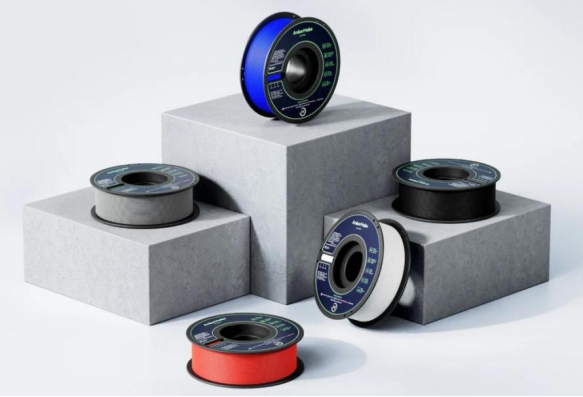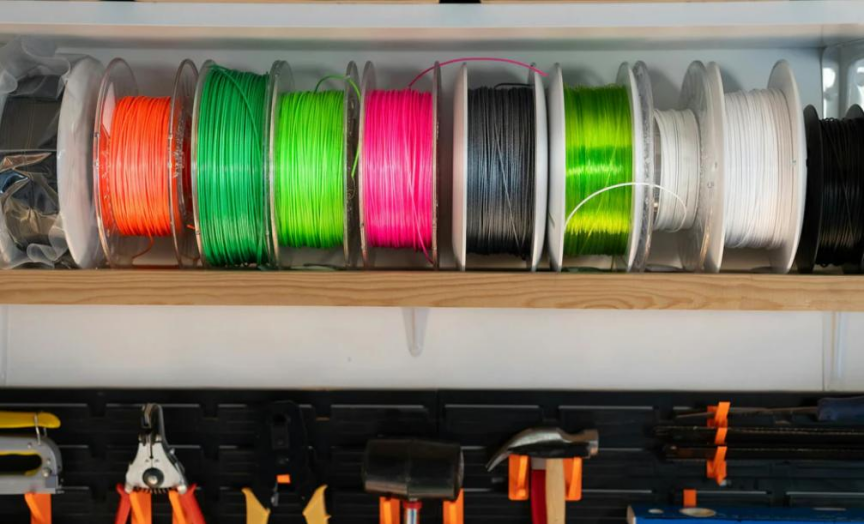Why Is Proper Filament Storage Crucial for 3D Printing Quality?
Maintaining filament quality is essential for achieving the best results in 3D printing. Proper storage is a key part of this. If you neglect this step, your filament can absorb moisture, leading to p...
23/01/2025
Maintaining filament quality is essential for achieving the best results in 3D printing. Proper storage is a key part of this. If you neglect this step, your filament can absorb moisture, leading to print failures and poor quality. In this blog, we’ll explore why proper filament storage is critical and how to store it correctly to maximize your 3D printing results.

What Happens to 3D Printing Filament When Improperly Stored?
Improper filament storage can lead to various issues that negatively affect your prints. Below are some key problems caused by storing filament incorrectly.
Effects of Moisture on Filament
Moisture is the primary enemy of 3D printer filament. When filament absorbs moisture from the air, it can lead to numerous problems. The water in the filament causes it to expand, which can result in bubbling and steaming during the printing process. This reaction can damage your prints and clog the printer’s nozzle, leading to potential breakdowns.
Warping, Cracking, and Print Quality Issues
Improperly stored filament can lead to warping and cracking in printed objects. Absorbed moisture weakens the filament’s structural integrity, resulting in fragile prints. Moisture-laden filament also causes uneven layers and poor layer adhesion, which further degrades print quality. Proper storage is essential to prevent these issues and ensure strong, consistent prints.
How Proper Filament Storage Improves Your 3D Printing Results
Proper filament storage can have a significant impact on your print outcomes. Let’s look at the key benefits of storing filament correctly.
Preventing Print Failures with Proper Storage
Storing your filament properly greatly reduces the risk of print failures. Correct storage prevents moisture absorption, keeping the filament in optimal condition. This ensures smoother, more reliable prints with fewer issues like nozzle clogs, poor adhesion, and weak structures. By preserving your filament’s quality, you can enhance print performance and avoid costly disruptions, leading to consistently better results with every print.
Maximizing the Lifespan of Your Filament
Proper storage extends the lifespan of your filament by preserving its original color and strength. When kept in a controlled environment, the filament remains in optimal condition, allowing for longer use without degradation. This not only helps save money by reducing the need for replacements but also ensures that your prints consistently maintain high quality throughout each project, delivering reliable and impressive results.
How to Properly Store Your 3D Printer Filament
Storing filament the right way is essential to maintain its quality over time. Let’s explore the best practices for keeping your filament in top shape.
Ideal Storage Conditions
Filament should be stored in a cool, dry place, away from direct sunlight. The ideal environment features stable temperatures and low humidity levels. To maintain these conditions, using a dehumidifier and hygrometers can help you monitor and control the environment. This ensures your filament stays in optimal shape, preventing moisture absorption and maintaining quality for better 3D printing results.
Tools and Containers for Safe Filament Storage
Invest in airtight storage containers to protect your filament from moisture and dust. Clear or translucent containers allow you to easily see your filament without opening the container. For long-term storage, consider vacuum-sealing your filament with silica gel packs to absorb any remaining moisture. Filament dryers are also useful for rejuvenating any filament that has absorbed moisture.

Common Filament Storage Mistakes to Avoid
Avoiding common storage mistakes can make all the difference in maintaining filament quality. Here are some of the most important things to watch out for.
Storing Filament in Open Air
Leaving filament exposed to open air is a common mistake. This allows moisture, dust, and contaminants to degrade its quality, leading to poor print results. To maintain filament integrity, always store it in a sealed container when not in use. This simple step ensures your filament remains dry, clean, and ready for optimal performance, preventing issues like clogging or inconsistent extrusion during printing.
Incorrect Temperature and Humidity Levels
Improper temperature and humidity levels can damage your filament. Avoid storing filament in areas with high humidity or significant temperature fluctuations. A stable, controlled environment is essential for preserving filament quality. Consistent conditions help prevent moisture absorption, brittleness, and deformation, ensuring your filament stays in optimal condition for longer, leading to better 3D print results and fewer issues with your printer.
Conclusion
Proper 3d printer filament storage is vital for maintaining 3D printing quality. By preventing moisture absorption and other environmental factors, you can ensure your filament remains in excellent condition. Adopting suitable storage solutions, such as airtight containers and filament dryers, will help maximize the lifespan and performance of your filament, leading to better printing results and fewer print failures.




